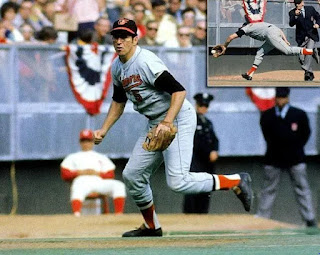My master's thesis at Georgetown was called The Pop Culturalization of the U.S. Presidency: How Monica Lewinsky Saved Democracy. Ok, now I know that sounds cheeky. But my findings were that, generally speaking, presidential candidates that had some kind of "sex, drugs, and rock 'n' roll" past tend to do well at the polls.
I digress. This is a new series I'm starting here because I love presidential history. Each individual president’s personal story tends to tell such an incredible microcosm of what was happening in the U.S. culture at large at the time.
So with that prelude out of the way, here, for your reading pleasure, are what I think are the most interesting personal - often sex, drugs, and rock 'n' roll - anecdotes of each president, mixed in with some of their key policy work as well. This first edition starts at the logical spot - big GW.
————
Sex
One of my favorite myths about old George is about his "wooden teeth." They weren't wooden, however, because of poor dental hygiene, he did have a metal frame mixed with ivory, gold, and other materials to hold his teeth together.
It's tough to tell whether those bad teeth did much to deter the ladies. His sex life is a topic that has been the subject of much speculation and debate. There is no definitive answer, as there are few records that explicitly detail his sexual experiences. However, there are some clues within his personal writings, letters, and other historical sources.
It is known that Washington was married twice, first to Martha Dandridge Custis in 1759 and then to Nelly Custis Lewis after Martha's death in 1799. He had no children with either wife, but this may have been due to a number of factors, including Martha's age at the time of their marriage and Washington's own health.
There is some evidence that Washington was sexually attracted to other women. For example, he wrote a series of passionate love letters to Sally Fairfax, a married woman with whom he was briefly involved in the 1750s. However, it is unclear whether these letters were simply expressions of platonic love or if they had a more physical dimension.
Along with these women, Washington, it should be noted, was a dude who seemed to also like himself quite a lot. He allowed his portrait to be painted, had major celebrations of his birthday, and could really cut the rug at those celebrations. He was also known for his tours across the country, because he recognized the importance of bringing the nation together with feelings of shared symbols and symbolism.
Drugs
George Washington was a pretty heavy drinker who tended to choose Madeira wine and Port. He also drank rum punch, porter, and whiskey. That said, this behavior was not unusual for the 18th century, as everyday alcohol consumption was much more common than it is today. For example, it was used for medicinal purposes, as a way to stay warm in the winter and as a social lubricant.
There is some debate about whether Washington's alcohol consumption was excessive, but he lived to the ripe old age of 67, pretty impressive for back then. It doesn't appear that Washington used any other drugs, either recreationally or medicinally. He grew hemp at his home at Mount Vernon, but that's about it.
Rock 'n' Roll
At 6'2", GW was often the tallest man in any room he entered, so most people could probably see him frequently dancing, with typically graceful moves. He was even known to dance late into the night at balls and parties. When not partying on the dance floor, Washington could be found riding horses both for military purposes and personal pleasure and also breeding mules, perhaps his greatest passion.
Despite those outgoing sides, Washington was a very private person, known for his stoic demeanor and his reluctance to share personal details about his life. He rarely spoke about his family or his feelings, and he kept his private life pretty much to himself.
He was also a very religious man, a devout Christian who believed that God had a special plan for America. He often prayed for guidance and strength, and he believed that the U.S. was a divinely inspired nation.
Policy
Looking beyond the topics of sex, drugs, and rock 'n' roll, the first U.S. president was elected in 1789. A member of the Federalist Party, he fervently established a strong central government and was the lead author of the Constitution and then the 10 amendments granting fundamental citizen rights in the Bill of Rights. His refused calls for a monarchy-type government or life-long terms shaped the way we elect presidents to four-year terms. He also wanted the U.S. to remain neutral and stay out of wars in Europe.
Despite protests from Thomas Jefferson and others, he envisioned Washington D.C. with Pierre L’Enfant as a magnificent capital to rival the great capitals of Europe. He also chartered a national bank.
He brokered peace between the major partisan hostilities of Jefferson’s Democratic-Republicans and Alexander Hamilton’s Federalists, and in the process helped put down the anti-tax Pennsylvania farmers’ Whiskey Rebellion.
Perhaps his most lasting (although frequently disregarded these days) legacy was his call in the Farewell Address at the end of his second term to value our united nation and to beware of extreme partisanship.






































